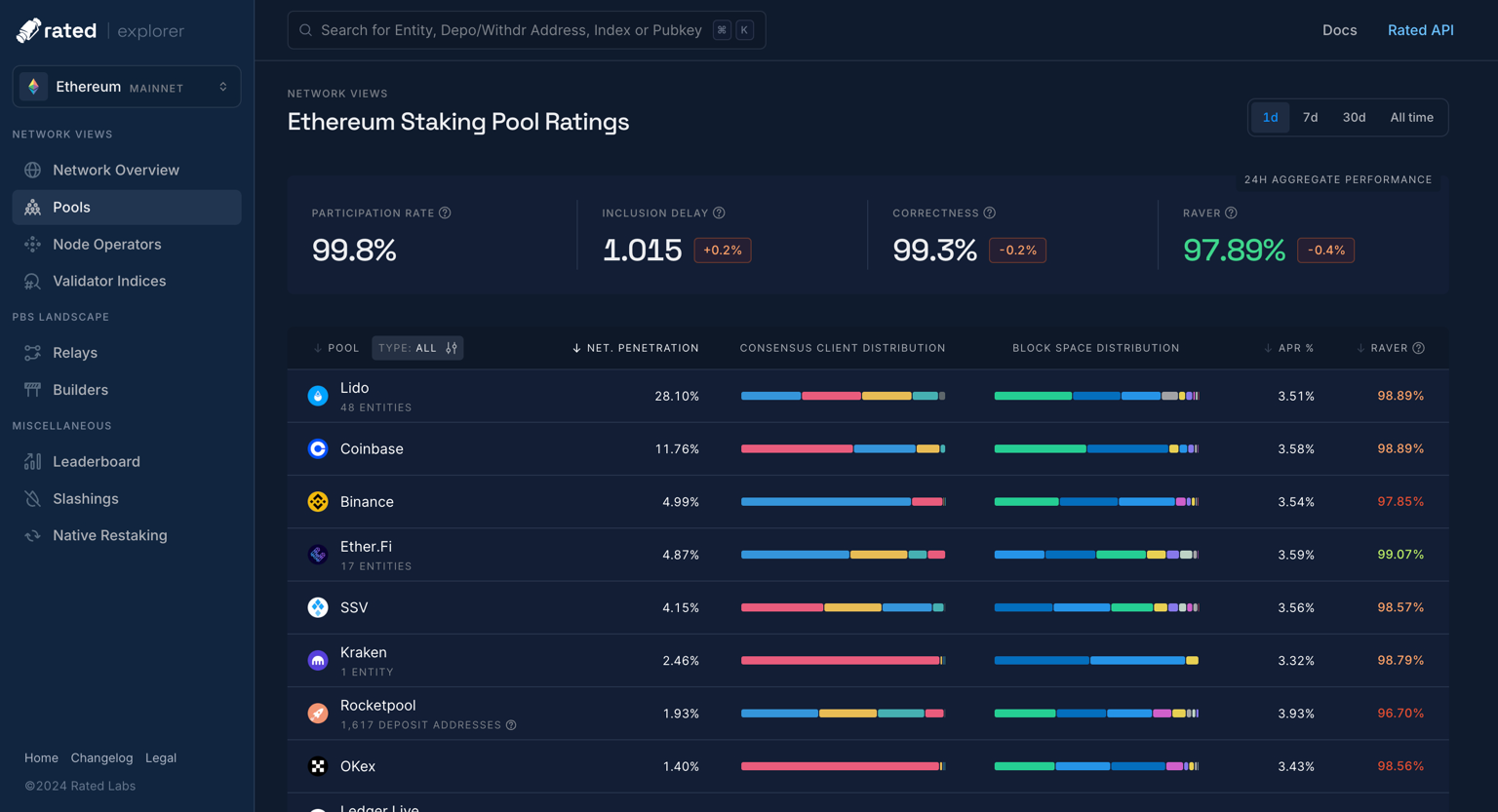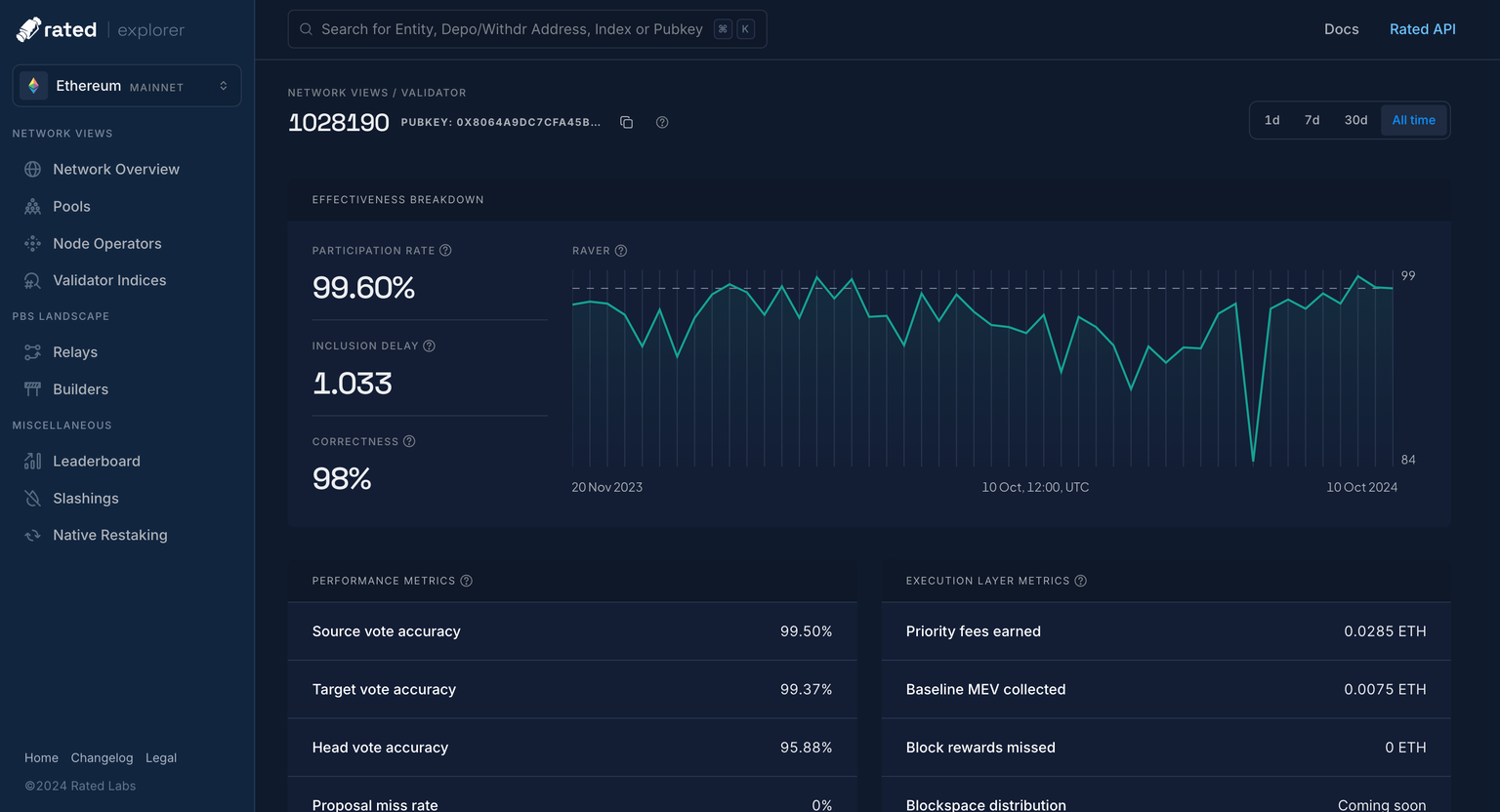Node Operators and Pools can now get their validator sets onboarded on the Network Explorer in a self-serve fashion. See here for Node Operators and here for Pools.

The Entity Views section of the Explorer sidebar, in focus.
Pools
The highest order of commonality among validators. What we conceptualise aspools in the Ethereum staking value chain, is the capital aggregation layer––in the broadest sense possible. In that sense, a good definition is “custodial or non custodial applications or interfaces, that facilitate the allocation of capital to node operators.” Among those we bundle:
- Liquid staking pools (e.g. Lido or Rocketpool) that operate exclusively on-chain.
- Custodial exchanges or custodians that offer staking as a product to their users (e.g. Coinbase or Bitcoin Suisse).
- Interfaces that intermediate and/or facilitate users allocating capital to node operators (e.g. Ledger Live).
Node Operators
The operating layer of Ethereum validators. In this category we bundle professional entities that task themselves with running validator nodes in custodial or non-custodial fashion. These often are the recipients of “delegations” from pools.Addresses
The highest order of pure on-chain commonality between validators. While we recognize that various deposit and withdrawal patterns can link unrelated capital or operational layers, we believe there’s significant value in such groupings. This is particularly true for smaller node operators and solo stakers. For convenience, we’ve enabled a toggle allowing you to view these groupings either by deposit or withdrawal addresses using the address filter. The Explorer enables users to search a deposit or withdrawal address by passing a specific address (e.g.0x8cf07ac011d6c39fc28f6a946df192a85eb3a723) to the search bar.
Validator indices
Ungrouped validator index pages. The Explorer enables users to search a validator by passing a specific validator index (e.g.88888) or its associated pubkey to the search bar.

The validator index search-bar section on the Rated Explorer.

The validator index page for validator index "1028190" on the Explorer.

